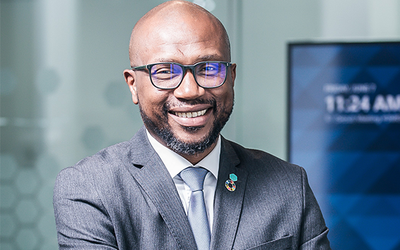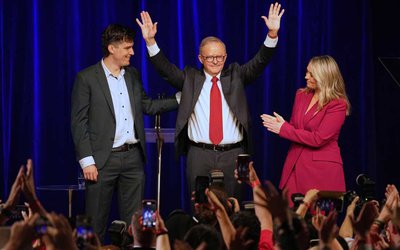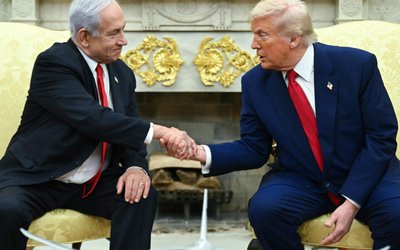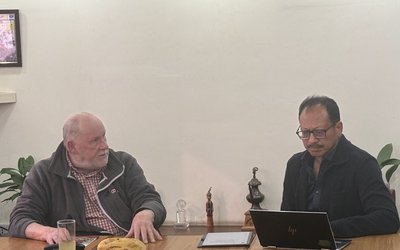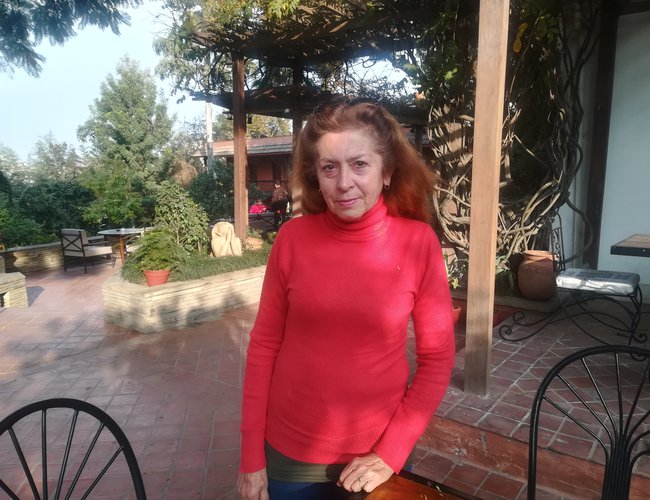
As a British woman, how and why did you come to live in Nepal? How long have you been living here for?
Well my husband was a British Gurkha Officer so he came here in 1962 actually, and he said, there’s this beautiful country we have to go to, so I met him here later on. We came trekking in late 1976 which I totally remember because all the time I kept saying I want to live here. Then, just by pure fluke, he was offered a job with the Tiger Tops Group running the trekking side, Mountainside Travel. We got here in the beginning of May 1978, we came over from UK, so we’ve been here for nearly forty-one years. But actually, we were only planning on coming for a year, because I was on maternity leave. I was a British Airways stewardess at that time and I came on maternity leave and we’ve been here ever since.
In your time of living here in Nepal, what kind of transformations or changes have you seen? Have there been any things which have gone better or worse in your opinion?
Well both really, it certainly was Shangri-La when we came, so I think that side of things have changed for the worse. There were more birds and bees and all sorts of butterflies and trees; it was all very green, it really was Shangri-La. When you came to the airport, you drove through rice-fields to get into Kathmandu and I think there was, what, something like maybe about a few hundred thousand people living here then, so it wasn’t built up - it was lovely. Communications were very different, we had only telex when we came. Nobody’s phones worked so the people who were here just used to drop into each other’s houses because there wasn’t any point using the phone usually. All the foreigners used to line up at the post office by Bhimsen Tower at Christmas to phone home, so it was very different. There weren’t many cars, there weren’t many foreigners, so you knew just about everybody who was in them, that’s changed of course, completely, don’t know anyone who’s in anything now (chuckles). Food was more basic, it was perfectly healthy but it was definitely more seasonal and restricted because of the crops that were grown and what was available. Now there’s an amazing array of food here, better than just about anywhere in the world - there’s variety, it’s organic, amazing! Other pluses are that communications are very good now too; generally, the streets are cleaner, ladies sweep them every morning; we have electricity so can function better; we don’t have those crippling ‘bhands’ and the local dogs are mostly in better conditions and treated a bit better.
You are a pioneer in helping burn victims in Nepal, your organisation, Burns Violence Survivors, was one of the first of its kind. What is the story of BVS? When and how did you come to help these burn victims?
Well it’s the only one actually helping burn victims. I was at a dinner party, twenty years ago, and I was sitting next to the best burns and plastic surgeon in Nepal, Dr Keshav Das Joshi, he’s a brilliant man. He said to me, you’ve been here for a long time - we’d been here for about twenty years and I didn’t know anything about burns because you never saw anyone burnt, it was a very subdued sort of subject. He said, I need some help, and as one does after a second glass of wine you go, oh yes, what would you like? And he said everything (bursts into laughter). He called me in the morning saying, can you come into the hospital? He was in Bir Hospital then, at the burns and general plastic surgery ward, I think. It was quite a shock and he had said, I hope you have a strong stomach - well I have, but it was still quite a shock, it was quite Dickensian, I must say. Anyway, he had this plan to turn the end of a corridor into a specialised burn ward, which he did after some months. We started off with family and friends getting furniture and bedding and medicine and bandages and all those sorts of things. Then it became apparent that there was more needed than that; there were a lot of young women so we got counselling in, we started to take records of all the patients. My daughter and I were really doing that and my husband, family and friends were really supportive. We were doing that for ten years, from the end of 1997 I think, that was until we managed to get NGO [Non-Government Organisation] registered in 2008. Well that actually came through our embassy and we were asked if we would like to join an organisation in UK called Acid Survivors Trust. I said I’d help but I thought it wasn’t very good for Nepal because we have acid burns but we don’t have that many, it has a stigma about it. Finally they came back the next year and said would we help if it was called ‘Burns Violence Survivor’, because we help anyone who gets burned. So that was how it started.
Could you describe what exactly BVS does to help burn victims?
Well we work with the very poor in twelve hospitals now. We’re not medical, we raise funds for their medical and surgical support, counselling, physiotherapy, we take food nutrition baskets to county children hospital every week and the other teaching and trauma programmes we do bi-weekly. We pay their transport if the family is very poor, we pay for the relatives’ food sometimes if they’re very poor. We get clothing and toys and medicine and general things. We also do prevention and awareness, we do presentations in schools, we do street theatre, stickers on long distance buses, radio jingles in seventy-four districts but we’re very small. We provide rehabilitation and help set up businesses for survivors as well.
How many people are employed/volunteer in the organisation?
We have four people employed and a couple of survivors who work part-time.
How many victims have received help from BVS?
Some of them have been in hospital for years, some of them are extremely badly burned so it varies a lot but we did do a reckoning last April. We keep records of every patient who’s been in Bir and other hospitals, and we’d sent home more than eight and a half thousand burns patients. But fifty-six thousand approximately get burned, that’s WHO figures, in Nepal every year who are needing help, so we’re a drop in the bucket - it’s taken a lot of work to get where we are.
What are the future plans for BVS?
It’s always difficult to raise money to keep the ship on the sea, but our next plan is to reopen a six-bed ward in Patan Teaching Hospital which we’re pretty sure we can do. We don’t support all the patients in government hospitals because we can’t possibly, but we support the very poor. Most of them are pretty poor so they get help in as much as they get counselling, physio and nutrition, but if they’re very poor they also get medical or surgical support. We’re in the government hospitals where, actually, the treatment is very good there because they have experience of burns and the patients do get a cheaper or free bed and discounted medicines and surgery, so that’s where the poor tend to go, if they get there. Also, we want to do more in helping to train medical staff in Nepal, like health posts, to support and give them basic burn dressings and some course on how to treat burns if they’re not too serious and where to refer them if they are. We would like to move out of the cities and try to get some care to the hills because there’s very little if any. There’s a child in county this week, when we were there, who had travelled twenty-four hours with sixty percent burns and that’s not unusual to travel twelve, eighteen, twenty-four hours on public bus with severe burns. So next time you burn your finger you think of what that would be like with sixty percent burns on a public bus for twenty-four hours - dreadful. So that’s our aim, if we could get the funding for there to be more support for burns outside of the cities.
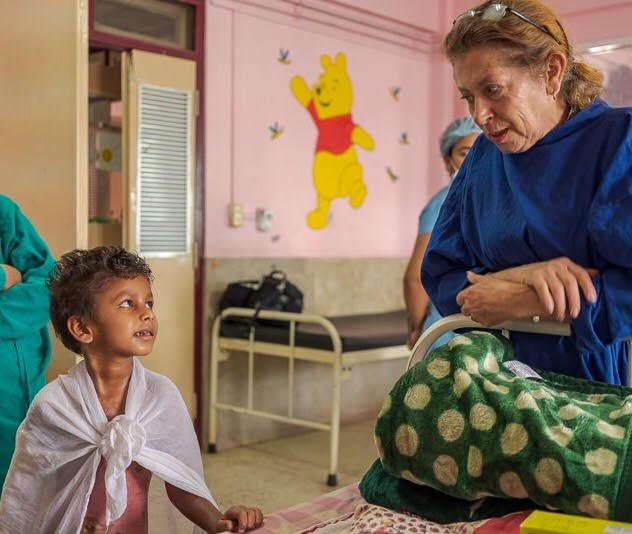
How could ordinary people help the organisation?
They could help by raising funds and raising awareness. Young people could actually help by doing presentations in schools, there’s so many schools in Nepal and young people are ideal because they retain information, they can go home and teach their parents; lots of the schools in Kathmandu have children who are quite privileged and maybe they have staff at home who they can help to spread the word. Also we need fundraisers, we need bright ideas, we need marketing, we need more media to get this out because most funds have come from outside and they shouldn’t really -there’s lots of money in Kathmandu and there needs to be more done. For example, you could miss one meal a month or you have one beer less, that would all add up, or if we could get onto things like airlines, just ten rupees on a ticket, that kind of thing. We need more people to help us market because we just don’t have the personnel to do it effectively; the staff are wonderful but I’m a dinosaur and they’re good but they have too much to do. They have to report to all our donors, everybody who does give us some money, however small, they get a report, they get photographs of the patients and that takes a lot of time to compile and send off. So that kind of media, raising awareness is what people could do and raising money in whatever way. I had a friend this week from UK and she brought us some baby clothes and things, her idea was based on what her village did, where instead of everybody having a birthday party, they’re going to have a joint birthday celebration and have one big party and instead of getting presents they give some donations, so that’s great. There’s all these different ideas people could come up with, they don’t have to be great big fundraisers, they can be smaller things, things before Christmas, things before Dashain maybe.
Regarding the issue of burn violence or acid attacks, what do you think Nepal should do to tackle this?
I think people need more support. I can only talk from what I’ve seen, I’m not preaching that this is right but you get violence everywhere, for instance UK’s having a lot of acid attacks now, the problem here, I think, is that there’s no safety net. You have good women’s groups and things but if you have more active community meetings, not just for burns, for drugs or for alcohol or other issues, where the community will meet, you could dissipate a lot of these problems before they get to this stage. We have this lady who was attacked with acid about six weeks ago now, because she rejected her neighbour who was married with two children and she was married with two children. He wanted to divorce his wife and marry her but she didn’t want to, she had a perfectly nice husband and family. When she was coming back with vegetables from the market, he threw acid on her and then he stabbed her repeatedly. She was a very beautiful woman and she’ll never be beautiful again, but she’s a fighter and she’s going to survive. Last year, we managed to get an ICU bed and equipment as there were none in the government hospital and she was put in there. She was completely black, just completely burned with one eye, but she is recovering, she’ll need a lot more help but she’s a fighter. We heard that when that happened, she was lying in the road calling for help and nobody came, the fact that nobody came is almost more shocking than the attack. So, I think there needs to be much more community spirit but I think that’s quite difficult because since the time we came, there’s been so much changes. So many people have moved into the city and Kathmandu, you don’t have this community that you used to have. Neighbourhoods in Kathmandu were communities too, when we came nobody had high walls, nobody had shut gates, everything was open, you knew everyone who lived around you and that doesn’t happen now. I think that there needs to be a lot more help to organise community halls or meetings so that people can help support each other.
When Prince Harry came to visit Nepal in 2015, he also saw BVS’s work and you accompanied him around the hospital. Can you remember what he said about the organisation?
He was very shocked, very touched, very moved to see these children. We have burnt children all the time, but the last three years about seventy percent of them were as a result of the earthquake because they have been living in earthquake shelters or just under tarpaulin and of course there’s no room for their mothers to cook, so accidents happen. He stayed longer than what was on his program, his aid was saying to me, can’t you hurry him up? No! He was very good with the children and he said that he thought our work was very difficult; he said to my daughter, who he met later, it must be a difficult job. He was wonderful with the children, he was there for about forty-five minutes maybe a bit longer. Other parents of course they had their cell phones hidden in their nutrition baskets and (motions taking pictures, giggling). He was very good-natured and high-fived all the children. We’ve been in communication since, I’ve kept him up to date about some of the patients that were there; there was a little Sherpa boy who lost all his toes and he was worried that he wouldn’t be able to walk again but he has and he’s in school again and another child who was badly burned is doing well. We keep him up to date and I owe him a letter actually (guiltily laughs).
Congratulations on receiving the British Empire Medal for your outstanding work with BVS. What are your thoughts on being awarded this distinction?
Well, of course it’s a great honour and it was a big surprise. Personally I would prefer that the problem wasn’t there, if the problem wasn’t there and I didn’t get the honour I would be happy. But of course it wasn’t just me, it reflects on BVS too because we have a good name now, I’m really proud of the organisation, it is totally transparent. As I say, when I was here for twenty years I didn’t know anything about burns or what the problems were and that it was such a big deal, but what BVS has done is that they have raised the profile. So it’s good and it’s a great pretty medal (bursts into laughter).
Finally, do you have any advice for foreigners coming to live in Nepal?
Enjoy! I think the people are wonderful, that’s the great thing and that’s the abiding thing that would keep us here and we have a lot of stray animals. It’s so nice, I think now it’s quite important to try to get out of the city too because it’s not as it was but the people are lovely, the climate is good - it’s a wonderful country. There’s so many bright young people like yourself, it’ll come right. It’s been through so many transformations in the last few years but everybody that comes to visit us loves it, young and old. We get so many visitors because we’ve been here a long time, we’re a couple of old ancients here, and they all love it. I mean they have comments about the pollution but the basic and most important thing is the people.

Saima Pun
Pun is an intern from the UK
- NEPAL TOURISM CAMPAIGN #VisitNepal2020
- Mar 05, 2019
- Kathmandu’s Silent Killer
- Feb 10, 2019
- “The British Council Vave Got A Lot To Offer"
- Jan 26, 2019
- “What The UN Sees As A Challenge For Nepal … Is Inclusion”
- Jan 14, 2019
- NEPAL’S HERITAGE RECONSTRUCTION AFTER THE EARTHQUAKE Kathmandu’s Temple Troubles
- Dec 23, 2018


